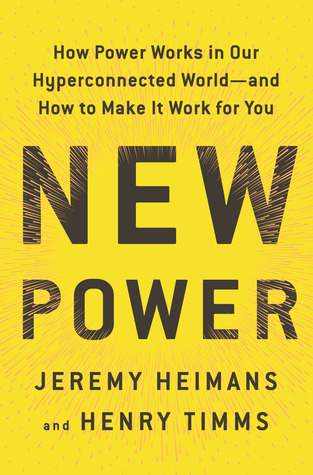More on this book
Community
Kindle Notes & Highlights
He hired the company’s first community manager, began to engage seriously with the Lego super-users, and started to identify smart ways to connect the company with its crowd.
The shapeshifter is a new power change agent in old power garb, a figure with unimpeachable institutional credibility who smooths the path to change and sets an example for the timid or resistant to follow.
Change Day was a classic ACE campaign, with a clear call to action that connected staff around an inspiring goal and an extensible frame that participants could make their own.
They did this with an “opt-in” approach, creating frequent lunch events, sessions with outside speakers, and opportunities for the curious to find out more. Then, as soon as interest started to build and results started to be generated, the team of administrators got themselves out of the picture. They made sure it was the solution seekers, rather than the staff overseeing the initiative, who became the stars of the show. These stars recruited others, and the cultural shift really began to take root.
All the energy and commitment that people felt had nowhere to go next.
Signaling is the way a new power leader makes a crowd feel more powerful through his speech, gestures, or actions.
Structuring is how a new power leader puts in place structures and practices that enable the participation and agency she seeks to build.
Proceedings are interpreted in eight languages so that everyone can take part.
The signal she is trying to send, therefore, is clear: I failed at this and I’m still here. It’s not just OK to engage the crowd and fail spectacularly at GE; it is expected and embraced.
has structured GE to deliver greater creativity, inside and out. She targeted not just the 300,000 people on GE’s payroll, but the vast communities beyond its walls whose involvement she sees as key to her company’s future.
This approach crowded out the people who might have helped him make the initiative work. By taking up so much space himself, there was no room left for others to occupy. Race Together seemed hasty and
“The benefit of pushing money downward and letting people do with it what they will is that very often they will do with it what you want. So when the recall effort came the NRA appeared to be virtually a non-player…Nevertheless, those grantees were so well-funded and so empowered that they took up electoral arms against these legislators and managed to take
Former top TED exec June Cohen has said that there was real resistance to this from some at TED who feared that posting the talks online would undermine the business model of ticket sales. But they saw precisely the opposite effect.
Founders were always willing to pivot to old power when the situation demanded.
Those who master the skills we have laid out in this book will be able to shift between old and new power as situation and strategy demands: to flip from open to closed, to toggle between “movement” and “institution,” to know when to control and when to release control.
Emerging approaches are helping organizations meet this new power worker on her own terms. The online service TINYPulse is a user-friendly solution that asks employees one simple question each week. This provides two benefits. First, it offers an outlet for those expecting a chance to share their views. Second, it provides managers with regular doses of data that can be aggregated,
Buurtzorg’s motto sums it all up: “How do you manage professionals? You don’t.” Madelon’s most vital
What Buurtzorg gets so right is it puts human beings front and center. It focuses on how to get teams of people to form deep connections with one another (which is why they turn nurses into interior designers). Buurtzorg uses technology to enable better peer coordination, but it doesn’t lead with it, a lesson the Holacrats (and some in Silicon Valley) have yet to learn.
We believe there’s a practical advantage—and a moral imperative—to designing platforms that prove more human: ones that offer worker protections and security, provide freedom and dignity, and release creativity and ultimately value.
This used to be the point where the story ended. In the twentieth century starting a newspaper was a vastly expensive endeavor requiring all manner of physical infrastructure and capital costs, which is why fired editors didn’t usually start new ones. But Wijnberg was not one to give up. If he couldn’t rethink journalism within an old power institution, he’d do it by creating a new power one. Wijnberg laid out a vision


